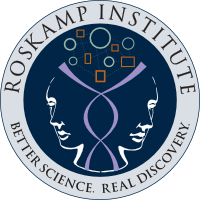Physical Exercise
How: There are 5 components, including aerobic (endurance), anaerobic (sprinting), isometric (strength), flexibility (yoga) and balance (axial musculature). Minimum of 5 hours/week. Do aerobic at ≥ 70% maximum heart rate (MHR), MHR is 220-age.
Why: Promotes neurogenesis or new brain cell growth (due to BDNF, GDNF brain growth factors released during exercise), synaptogenesis (new connections), cardiovascular (heart) fitness, cerebrovascular (brain) fitness, cognitive reserve (brain padding), antidepressant effects. Physical exercise is regarded as a vital sign.
Measure and monitoring by you: Overall activity measured in metabolic equivalents (MET). Some examples of a MET per hour: sitting 1, slow walk 2, Yoga 3.2, brisk walk 3.5, cycling 7.5, swimming 9, weight training 10, running 10, kayaking 10, sprinting 23. Aim is 9-15 hour/week or steps per day (for example 10 000 is good). Keep log of timed distance and speed data from activities you do such as walking, running, swimming, cycling, kayaking with the aid of electronic monitoring devices (Garmin, Fitbit). Garmin devices also measure VO2max.
Measure and monitoring medical: VO2max estimation by Uth-Sorensen-Overgaard-Pedersen test VO2 max =15 x HR max/HR rest. Cooper test: VO2 max = d12-505/45 (d12 is distance in meters covered in 12 minutes). Do v-VO2max for competitive athletes.
Cognitive Exercise
How: Reading, music, board/card/puzzle games, computer gaming, learning new language, meditation, Tai Chi (meditation in motion), heliotherapy 1/2 h sunlight daily, pet therapy (two way oxytocin release), forest bathing therapy boosts the natural immune system (natural killer cells) by inhaling phytoncides. Aim for 1-2 hours per day of any of these or combinations thereof.
Why: Builds cognitive reserve (brain padding), enhances working memory (the brain’s operating system). Meditation ‘brain builds’, gray (cells) and white matter (fiber tracts), improves networks, facilitates focus.
Measure and monitoring by you: Brain activity quotient (AQ) with BrainHQ (www.BrainHQ.com) recommend 0.5 hours 3 times per week. Can also use computerized games and exercises that can track brain scores.
Measure and monitoring medical: 1.Computerized testing (CNS-VS) for working memory, speed of information processing, attention, executive function and inhibition. 2. King Devick Test. 3. Cerebrovascular reserve (transcranial Doppler). 4. Cognitive reserve (PET brain scan).
Socialization
How: Group meetings, sport clubs, group discussion, dancing, group dinners, performing arts. Aim for ~5 sessions per week of ~60 minutes, face to face. Electronic voice/visual communication beneficial too, but less so.
Why: Sociality was a major factor in initial human brain enlargement as coping with group dynamics and polyadic relationships is very demanding. Sociality improves brain network integrity and promotes cardiovascular and immune health. Sociality induces oxytocin, endorphin and vasospressin secretion in the brain, which have neuroprotective, anti-inflammatory, anti-anxiety and antidepressant effects. Also boosts immune function and cardiovascular health
Measure and monitoring by you: Modified Social Network Index. Participation once every two weeks with up to 12 different social groups (spouse, parents, child, neighbors, relatives, volunteers, work colleague, student, sport groups, social clubs, religious group, charity groups). Score out of 12 (max).
Measure and monitoring medical: CRP, Interleukin 6, brain network integrity by MRI brain fractional anisotropy.
Sleep Hygiene
How: Pursue biphasic sleep, 8 per 24 hours and power nap most afternoons (15-30min). Sleep and work according to your chronotype, 1/2 of you are morning larks, 1/3 late night owls, 1/3 mixed. No caffeine after midday, limit night time blue light exposure from electronic devices. Avoid anxiety inducing activities prior to bedtime. Use mandibular advancement devices (MAD), CPAP or BIPAP while attaining BMI ≤25. Keep a dream log.
Why: Synaptic pruning during sleep enhances brain function, promotes learning memory, decision making capability, executive brain function emotional health, and social interaction. Dreams represent brain connectivity pulsations to help make sense of social and emotional challenges. Dreams also promote creativity, modulate emotional health, are antidepressant and enhance episodic memory consolidation. For the body sleep boosts the immune system, regulates metabolism insulin, glucose and weight control.
Measure and monitoring by you: SATED scale (https://www.ncbi.nlm.nih.gov/pmc/articles/PMC3902880/) Epworth scale (normal is <10). Record sleep duration (~8 h per night) and quality by electronic aids (Withings, Apple, Garmin).Measure and monitoring medical: C WatchPAT for REM/NREM, sleep architecture, apnea index, oxygen desaturation.
Brain Foods
How: Most important are fruits and vegetables 3 different types daily, sea food 3 x per week. This may be achieved by following Mediterranean, Nordic, DASH or Okinawan diets. Other key foods you should eat regularly include eggs, tubers (potatoes, carrots), legumes (peas, beans, lentils), nuts, seeds, spices, regular fat dairy and some whole wheat foods, red/white meat (free range). Chocolate, coffee and tea are healthy but adhere to low quantities and avoid consumption after mid-afternoon. What not to consume: cane sugar, corn syrup, sodas, diet sodas, trans-fats, vegetables oils, low fat dairy, processed meats, and cigarettes.
Why: Seafood contains docosahexanoic acid (DHA) which induces brain cell growth, synaptic growth (connections) and complexity, promotes connectivity and is antidepressant. Fruits and spices are powerful anti-oxidants. Refined sugars lead to fat deposition, diabetes, stroke and heart disease. Alcohol is beneficial at 1-2 ‘drinks’ per day. Resveratrol (red wine) and xanthohumol (dark beers) have additional benefits. Dairy products are healthy but not if low fat or fat free. Red and white are meat healthy but only from free ranging, antibiotic free animals. Breads (only whole grain) and pasta, limit to small amounts. Tubers include potatoes, sweet potatoes, yams, garlic. Healthy spices include curcumin, cinnamon, oregano, chili peppers, thyme and basil.
Measure and monitoring by you: Body mass index (BMI) aim 19-25, blood pressure ≤ 130/90. BMI estimation at https://www.nhlbi.nih.gov/health/educational/lose_wt/BMI/bmicalc.htm).
Measure and monitoring medical: Triglycerides, C-reactive protein, HbA1C, Magnesium, Omega 3/6 ratio
Written By Dr. Michael Hoffmann, M.D.

